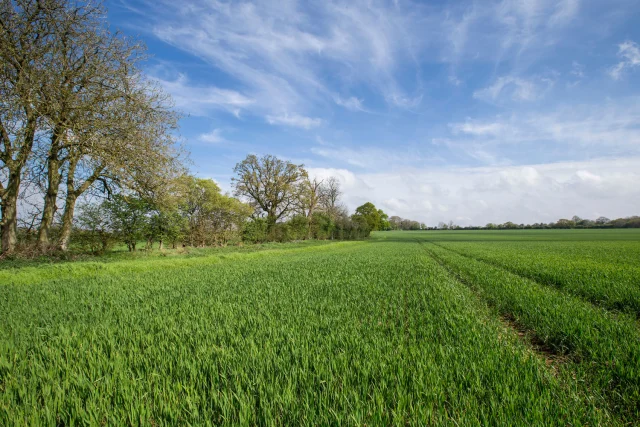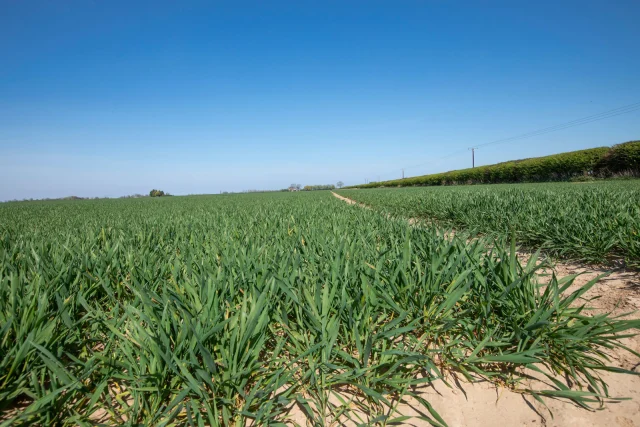Published on 29th April 2022
Local Insights
Four key tasks in arable crops in the south this May

Richard Prankerd outlines four major agronomic tasks for growers in the south in May
Four key tasks in arable crops in the south this May Content
Crop Progress
Cereal crops have a lot of potential as we enter May. They have yo-yoed a bit after the warm weather at the end of March and then cooler in April has evened growth out. T1s in wheat have generally been applied at a usual time towards the end of April.
Septoria at the beginning of spring looked like it could be troublesome in wheat, but the dry period has meant it hasn’t so far transferred up the canopy. The focus has switched to yellow rust, which has come in quite aggressively in some of the usual suspects, such as Zyatt, and has proved challenging to control. Rightly attention has been more on yellow rust at T1, and may need to be again at T2 if it remains dry.
Richard’s agronomy tips for May
1. Carefully monitor weather and wheat crops in run up to T2
If temperatures pick up in May and rain comes the potential for Septoria to cycle quickly and move up the canopy can happen quite rapidly as we saw last year. With a lot of money riding on these crops, and a lot of investment already made, it would be foolish to take any risks at this point.
That means carefully monitoring crops in the run up to T2, and take advantage of our free CropCheck service to help understand latent disease infections that are not visible at the time of sampling.
For October drilled crops of more Septoria-resistant varieties where intervals between sprays are not stretched, 1.2 L/ha of Ascra (bixafen + prothioconazole + fluopyram) should be fine at T2.
If it remains dry, 1.0 L/ha of Ascra will protect against yellow rust, but I would be cautious of going down that route at T2 as it is the main yield contributing timing. If there is active yellow rust present in foci in the lead up to T2 then the addition of tebuconazole or a strobilurin fungicide might be beneficial for fast knockdown.
2. Watch out for Rhynchosporium and net blotch in winter barley
Winter barley growth slowed during the cooler weather in April, so there will be some crops in early May still to receive their T2 spray. Timing is when awns are emerging – the awns contribute to photosynthesis but also can be source of infection for disease.
There are some reports of Rhynchosporium and net blotch being readily found in crops. To keep that threat at bay a well-timed follow up spray will be required.
What you did at T1 will influence what you can do at T2. You can only apply one application of Ascra in barley, so if you’ve used it at T1, we would recommend a follow up application of Siltra (bixafen + prothioconazole) at 0.4 L/ha. This will control all the main foliar diseases.
If you didn’t apply Ascra at T1 it remains a good choice at 0.7 L/ha, particularly where there is active net blotch. It’s also one of the best products to use to reduce the risk of Ramularia.
CropCheck is also available for barley to detect latent Rhynchosporium or net blotch infections.
3. Decide whether to use one or two fungicide sprays for spring barley
Spring barley went into fantastic conditions – warm soils with moisture, but the lack of rain since then has stalled development.
Deciding whether to apply a one or two spray programme will be driven to some degree by disease risk and weather.
One spray programmes tend to be a bit of a compromise and can lead to the first spray either being applied when disease is already in the crop, which isn’t ideal when the products work better as protectants. They can also push the limit of persistence, which again might risk late Ramularia infections.
If you do go with one spray apply it just before awns emerging and use a more robust rate of either Ascra or Siltra.
The first of a two spray approach should be applied at GS30 when stem extension has just started. Ascra at 0.7 L/ha or Siltra at 0.4 L/ha are good starting points, with a follow up likely to follow around 14 days later as awns emerge. Again only one application of Ascra can be applied in spring barley.
4. Weed control in maize
With some big anaerobic digestion plants in the southeast, maize is growing in importance. Drilling started in earnest after Easter continuing through the end of April, while soil temperatures are still on the low side.
It’s important to get maize off to a good start. While ultimately it is a very competitive crop, it’s not so much in its early stages so weed control is a priority.
For all round grass and broadleaf weed control our recommendation would be 100-150g/ha of Maister (foramsulfuron + iodosulfuron + isoxadifen) plus the adjuvant Mero, applied between two to six true leaf stage. Use the higher rate if grass weeds are your priority.
It has a good broadleaf weed spectrum, but black bindweed and speedwells are a challenge for the chemistry. If these are problematic on your farm then the addition of mesotrione or pendimethalin to put extra residual down could be beneficial.



